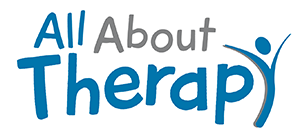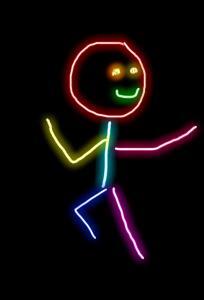When you think of the word reflex you might be thinking of that time you went to a doctor and they used a small rubber hammer to tap on your knee. This is one reflex, but there are also many others! Here we’ll talk about a couple reflexes your infant may have and why they’re important to development.
Infants have certain reflexes that serve them well for a brief period of time in development but then they are integrated by higher centers in the brain, meaning that they aren’t usually used anymore. If an infant, toddler, or child is still using a reflex beyond the expected period of time, this may interfere with the child developing more advanced motor skills and may also be an indication of a developmental delay or atypical neurological development.
One reflex that is commonly talked about is the Asymmetrical Tonic Neck Reflex (ATNR). Its typical onset is 0-2 months of age and it is usually integrated by 4-6 months of age. It’s easy to remember what this one looks like because it looks like the baby is fencing. The infant will turn their head to one side and extend their arm and leg on that side and flex their arm and leg on the side they are not looking towards. This reflex helps with the very beginnings of hand-eye coordination. If this reflex is still present past 6 months of age the infant may have difficulty rolling, crawling and using both hands together at the center of their body to play with toys.
Another common reflex is the Symmetrical Tonic Neck Reflex (STNR). In the symmetrical tonic neck reflex, the infant is positioned kneeling with their buttocks touching their feet, their arms are extended straight out with their hands pressing onto the floor, and their head is looking up. This reflex first appears around 4-6 months of age and usually is integrated by 8-12 months of age. This is the beginning stage of crawling. However, the infant will not be able to effectively crawl until the reflex is integrated and the infant is able to lift their buttocks from their heals without having their head look down.
If your infant, toddler, or child is having difficulty integrating these reflexes or other reflexes an occupational therapist can help. Here are some activities your occupational therapist may suggest for your child to help integrate their reflexes and develop more advanced motor skills:
-Have your infant, toddler, or child do activities on their tummy.
-Have your child side sit and complete activities. It may be tricky to use both hands to play with objects at first, but keep working towards it!
-Have your child stand and write something on a vertical surface such as a whiteboard or chalk board.
Hopefully this blog post helped you learn about a couple of reflexes and whey they are important to development!



